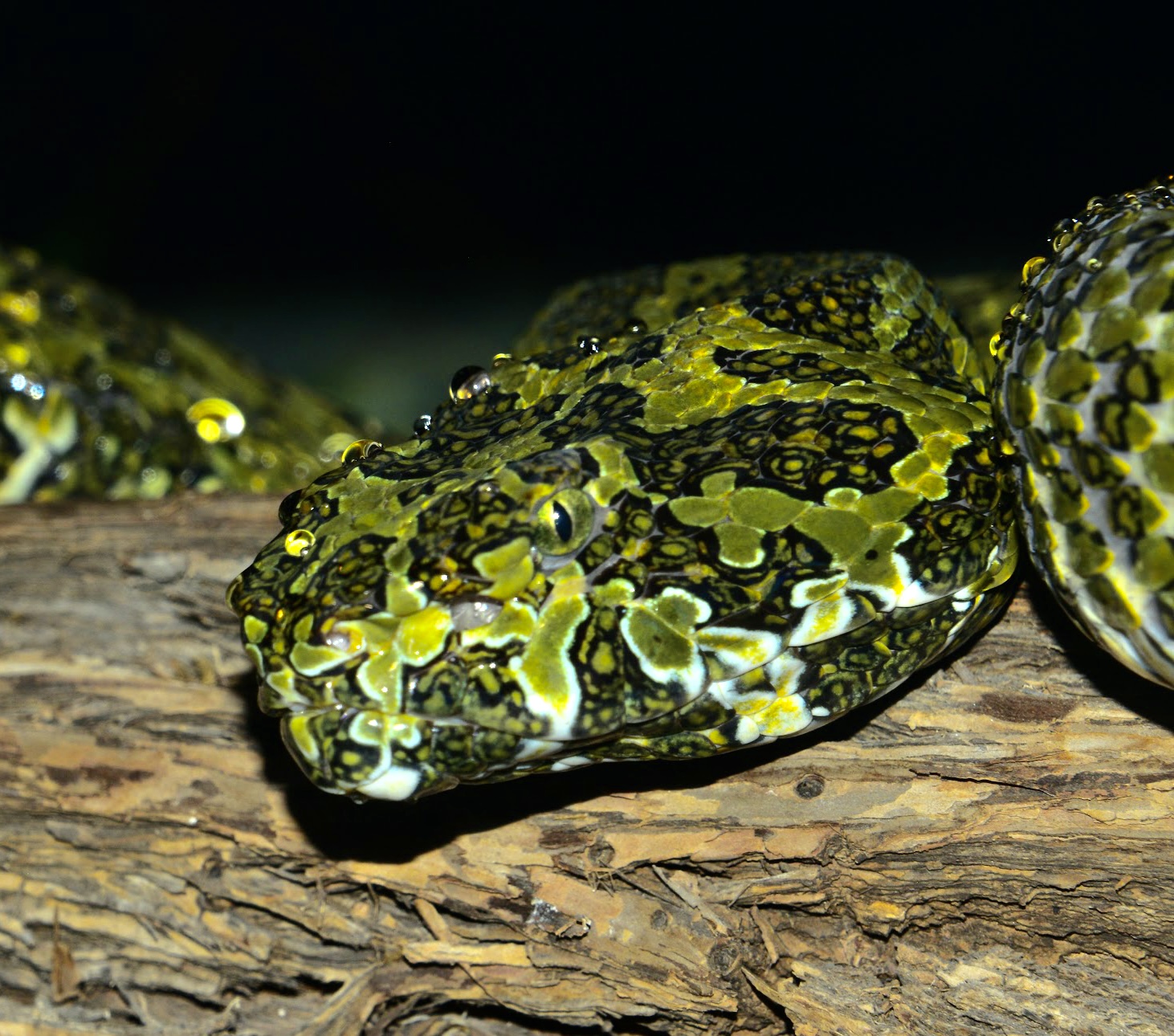Protobothrops mangshanensis

Protobothrops mangshanensis, is one of the most captivating and biologically unique pit vipers in Asia. Endemic to the misty forests of Mangshan in Hunan Province, China, this species is renowned for its striking appearance—mottled green, black, and brown scales that provide exceptional camouflage in its mountainous habitat. Reaching lengths of over 2 meters and weighing up to 5 kilograms, it ranks among the largest vipers in the region.
What sets Z. mangshanensis apart is not just its size, but its fascinating behavior. It uses a white-tipped tail to mimic a grub, luring unsuspecting prey within striking distance—a technique known as caudal luring. Its diet includes frogs, birds, and small mammals, and while its venom is potent—causing blood clotting and muscle necrosis—it does not spit venom, contrary to some myths1.
Unusually for vipers, this species is oviparous, laying clutches of 13–21 eggs and exhibiting maternal guarding behavior until hatching. Biochemical studies of its venom have revealed a novel Arg49 phospholipase A2 myotoxin, highlighting its evolutionary distinctiveness and potential biomedical relevance2.
Originally described under various genera, including Trimeresurus and Ermia, the name Zhaoermia was proposed to honor Chinese herpetologist Zhao Ermi. However, due to taxonomic revisions, it now resides within Protobothrops.
This rare and endangered species is a testament to the rich biodiversity of southern China and underscores the importance of conservation efforts in its native range.